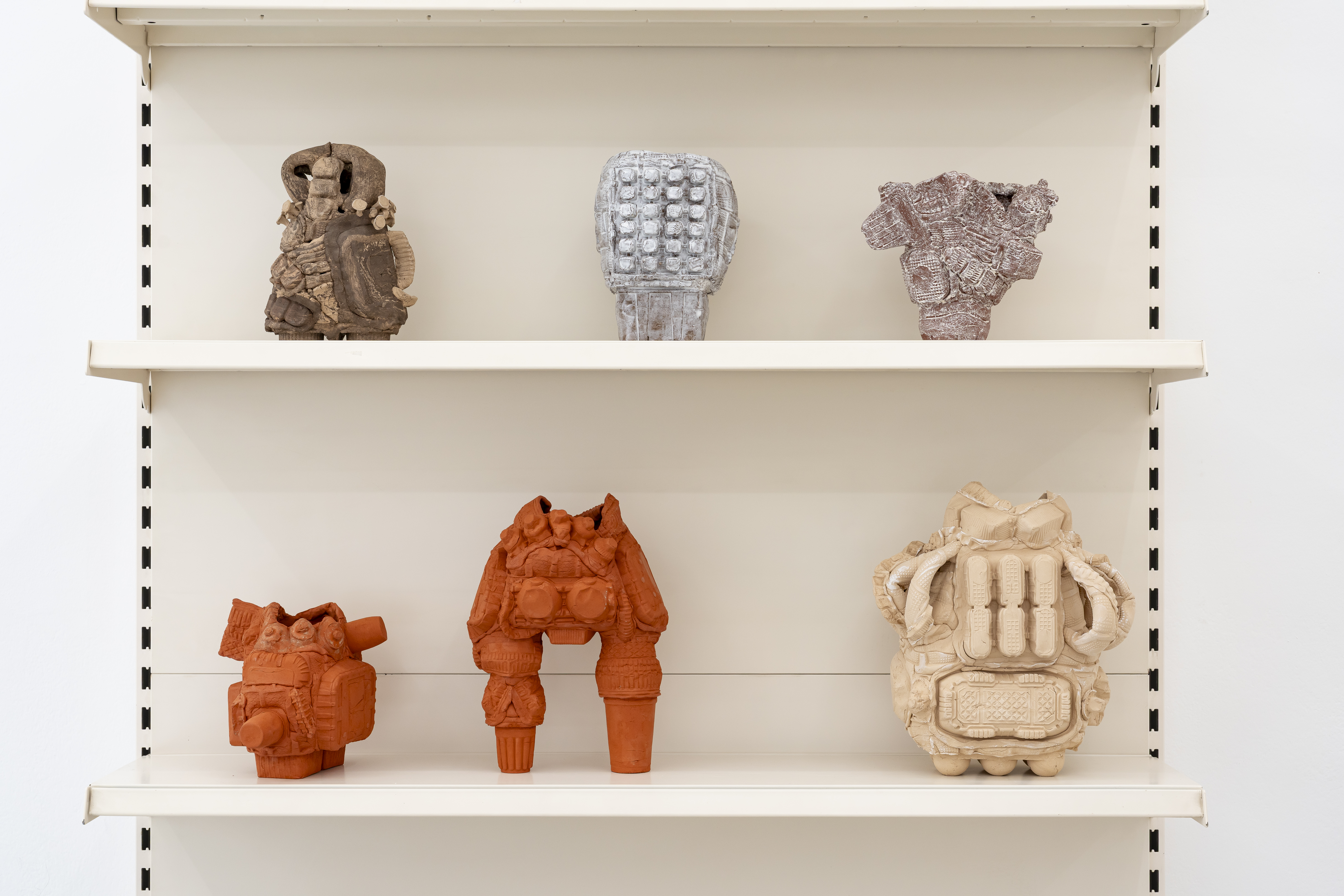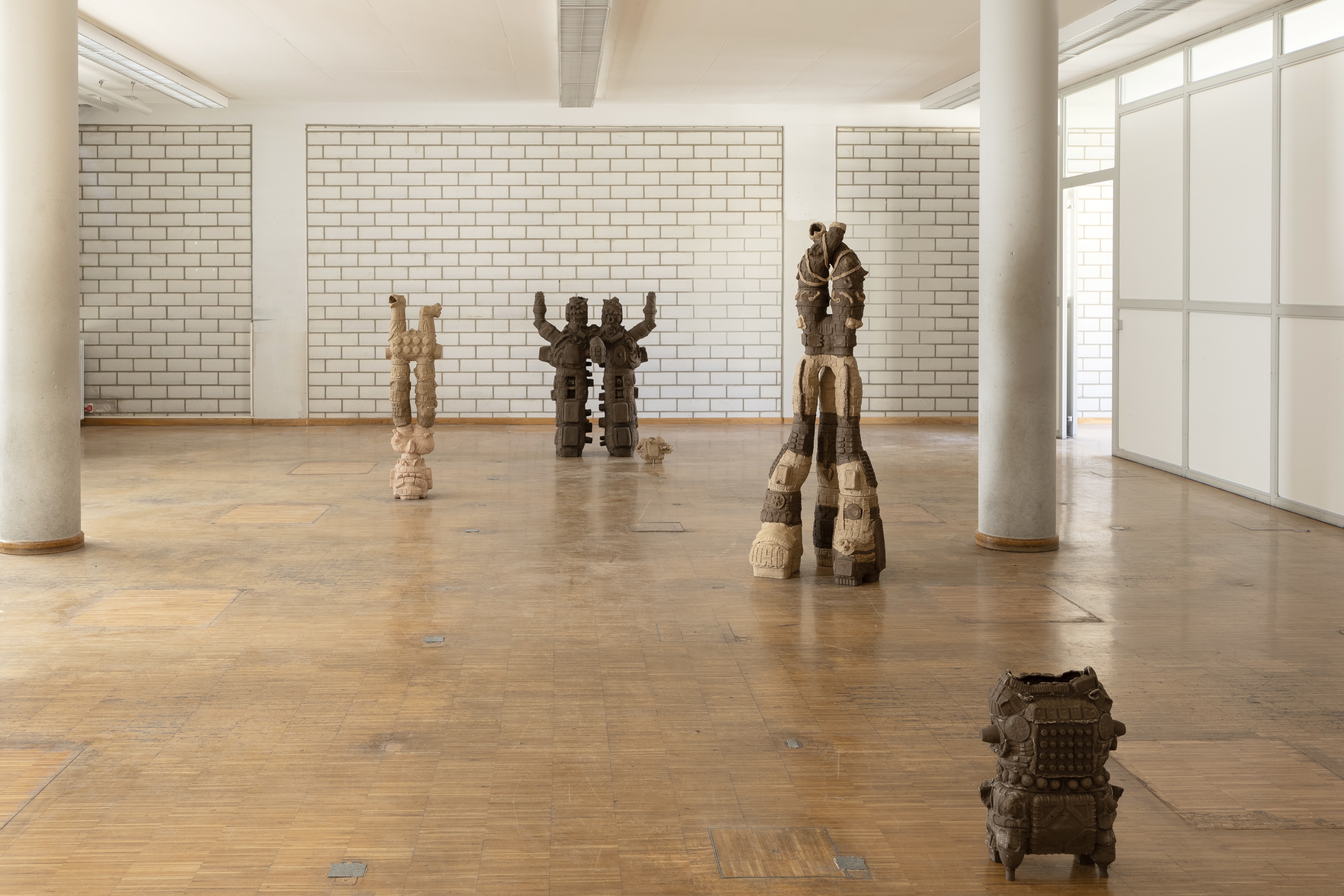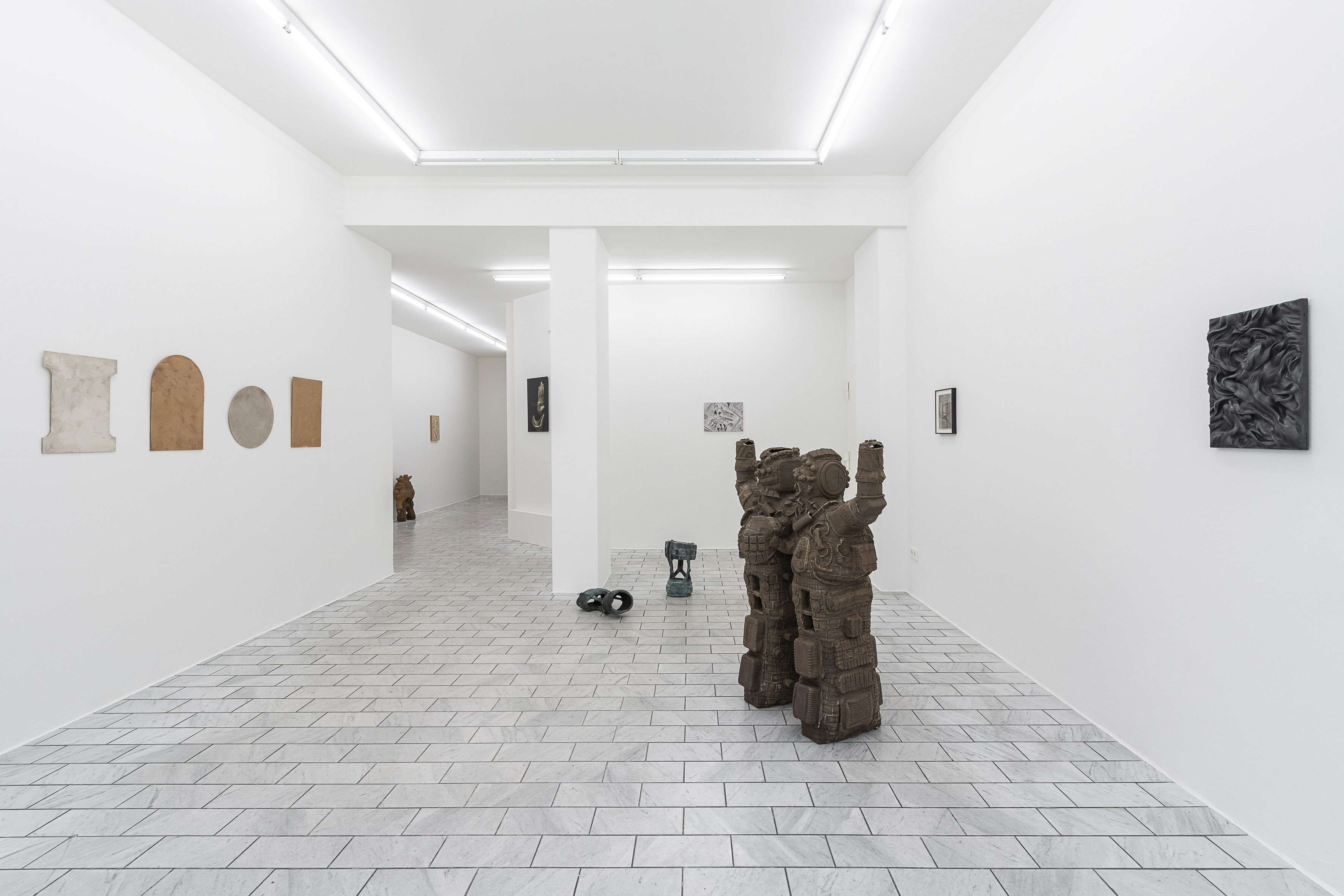Ayaka Terajima
Ayaka Terajima (*1987, Japan) is an artist who bridges ancient traditions with modern consumerism through he unglazed ceramic sculptures. Drawing inspiration from Jōmon pottery, the oldest ceramic vessels in Japan, Terajima reimagines their historical significance using contemporary elements. Her work particularly highlights the Jōmon use of rope and string-like motifs, often depicting snakes, which held symbolic ties to death, regeneration, and rebirth. In ancient Japan, where death was seen as central to existence, snakes and the moon were universal symbols o renewal, and Jōmon pottery was believed to store water, which was considered life-giving and connected to the moon. Terajima’s practice also draws upon modern packaging design. She incorporates relief patterns and negative space derived from unbranded plastic containers found in everyday products, juxtaposing the craftsmanship of ceramics with the disposable culture of contemporary supermarkets. By using recycled clay and developing her own technique to mold these found objects into her sculptures, Terajima explore themes of materiality, design transformation, and the lifecycle of objects. Her work reflects on spiritual and material rebirth while reframing it through the lens of logistics, consumption, and recycling in the modern world.
“Jōmon pottery is considered to be the oldest ceramic vessels in Japan. The antique clay vessels are characterized by distinctive relief patterns in the form of strings, shells or plants.
For the reliefs in her works, Ayaka Terajima uses the patterns and negative spaces of thin plastic containers that can be found in the cardboard packaging of everyday products such as cakes, soaps or batteries. These are anonymous support structures that arise from purely economic principles in order to achieve maximum efficiency with a minimum of material and weight, namely to make a product safely portable.
In Jōmon culture, the frequently used rope and cord-like ornaments represent snakes as universal symbols of rebirth. Ayama Terajima now links this narrative of spiritual rebirth and material regeneration with current issues of transportation and consumption as well as recycling and sustainability.”
Prof. Dr. Angelika Nollert
Director of Die Neue Sammlung at museum Pinakothek der Moderne
“Jōmon pottery is considered to be the oldest ceramic vessels in Japan. The antique clay vessels are characterized by distinctive relief patterns in the form of strings, shells or plants.
For the reliefs in her works, Ayaka Terajima uses the patterns and negative spaces of thin plastic containers that can be found in the cardboard packaging of everyday products such as cakes, soaps or batteries. These are anonymous support structures that arise from purely economic principles in order to achieve maximum efficiency with a minimum of material and weight, namely to make a product safely portable.
In Jōmon culture, the frequently used rope and cord-like ornaments represent snakes as universal symbols of rebirth. Ayama Terajima now links this narrative of spiritual rebirth and material regeneration with current issues of transportation and consumption as well as recycling and sustainability.”
Prof. Dr. Angelika Nollert
Director of Die Neue Sammlung at museum Pinakothek der Moderne


